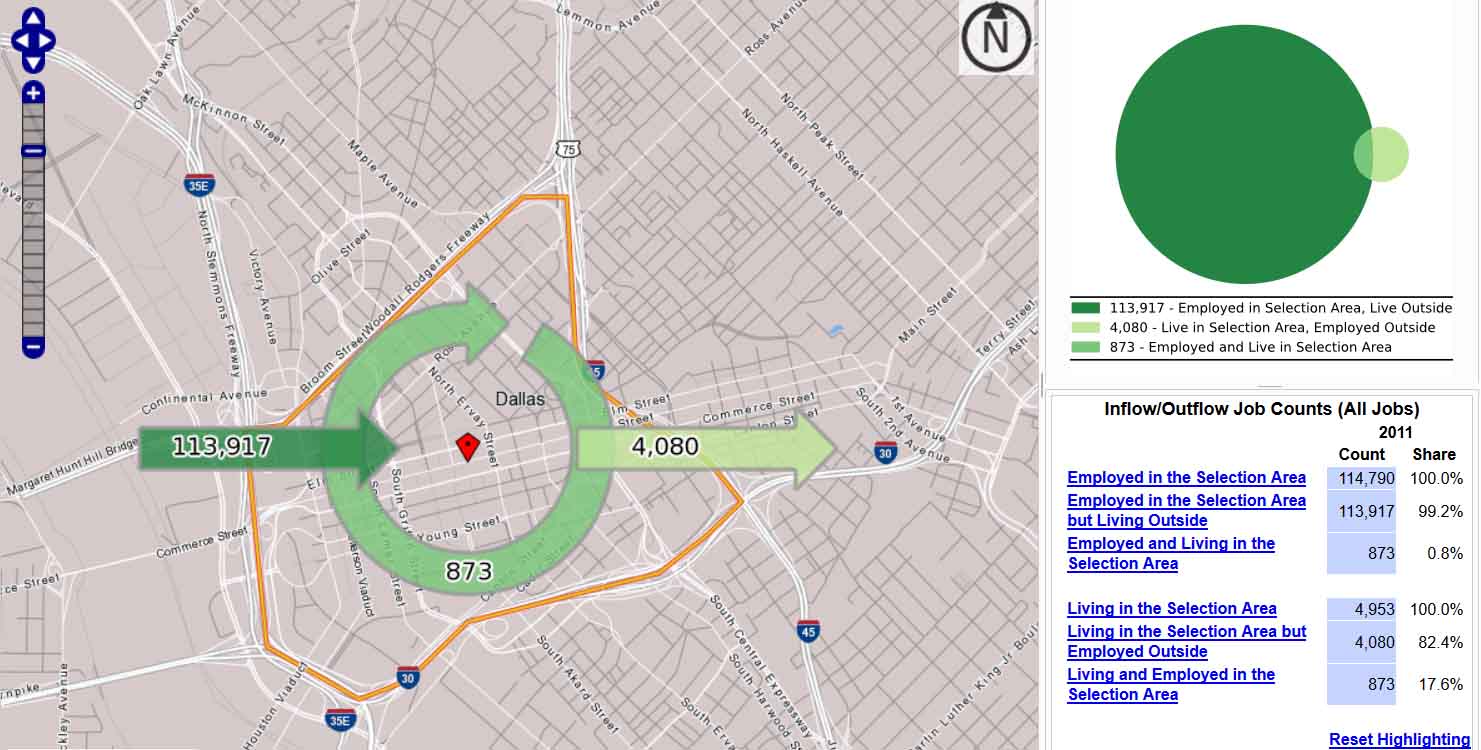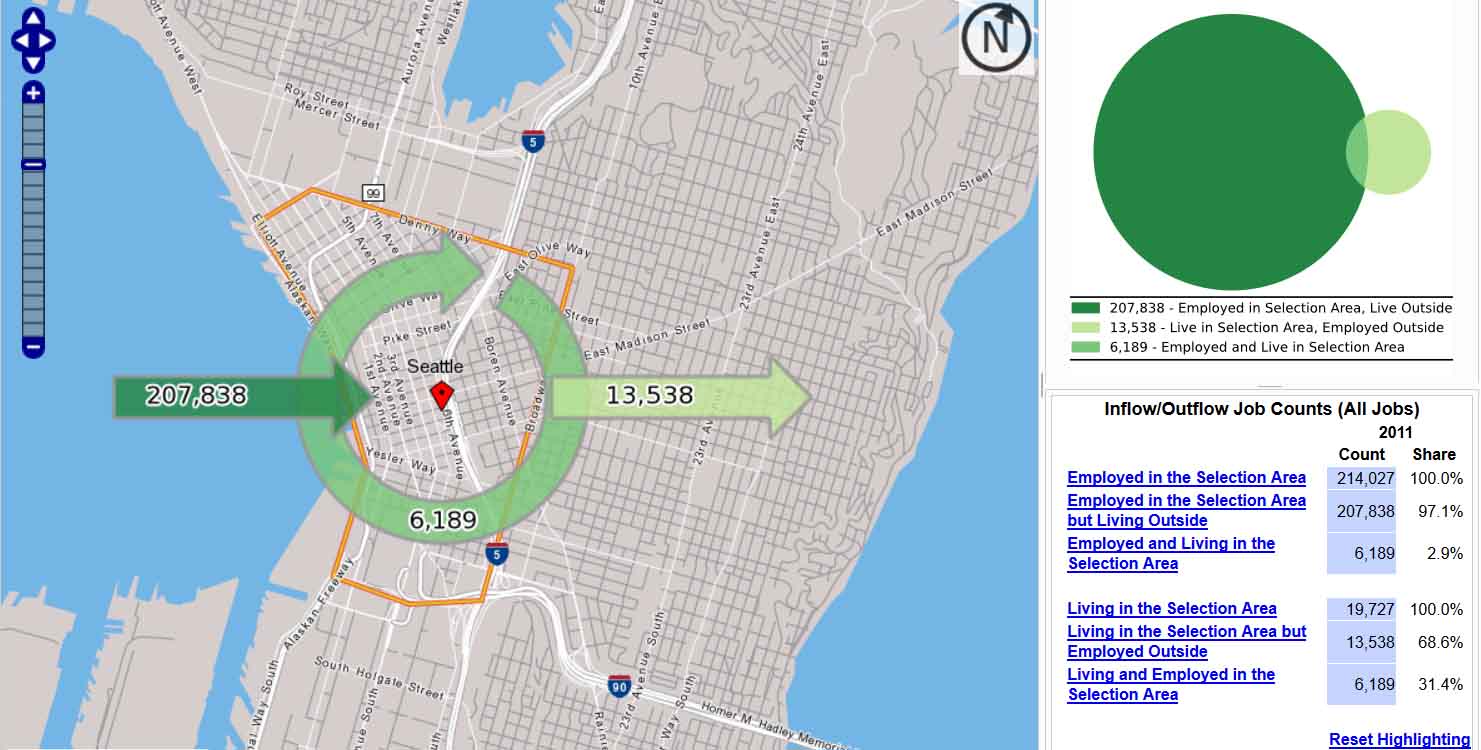There is a misconception floating around the city, infecting discussions related to how best to revitalize downtown. It usually hinges on how you feel about parking. The logic goes, the more parking we can provide, the easier it is for people to get to downtown. The fundamental flaw in that logic is that people generally don’t or won’t drive to something that can be replicated closer by.
It’s a suburban mindset by those that think downtowns should (or even could) compete with the suburbs on suburban terms. Rather, the answer is being less like the suburbs. Many of which happen to be urbanizing themselves, but they could never compete with a healthy downtown on downtown’s terms. If we could just get it there.
For downtown’s to be vibrant (and shooting off so much excess tax base they support much of the rest of the city), downtown real estate has to be a premium. There are too many embedded costs for discount real estate to work. The more we try to make downtowns like the suburbs with easy highway access and convenient, ubiquitous parking, all we do is undermine the desirability of downtown.
The deeper underlying flaw in the logic is that the visible presence of parking has a negative impact on surrounding real estate (as do the highways theoretically delivering the cars to said parking). The more parking you create, the less people want to be around it as opposed to the clustering of productive land uses and the synergies therein. Therefore not only do you cut demand for real estate, but also the very demand for that parking, reducing what can be charged for it.
The deeper question is what else could it be? From a land productivity and land use efficiency standpoint, the best parking space is the one that is never provided nor needed. In other words, from a theoretical perspective the best parking spot is a bedroom. It’s multi-purpose and closer to desired destinations.
If you can achieve mobility and accessibility without parking (or minimizing it) that reduces parking merely to cost (without benefits). If anything, we then have to look into the opportunity costs of the space that parking takes up (where it is often largely under-utilized throughout 24 hours, 7 days a week due to its inherent single-use purpose).
Of course, that ‘ideal’ isn’t possible. However, that simple equation does allude to the direction we should be heading in. Not more parking, but less. And repurposing the fields of parking to bedrooms and other more productive, more efficient land uses and land use arrangements. The better you arrange land uses (and design the spaces), you increase livability, desirability, and reduce the need for parking.
———————————-
A tale of two downtowns.
The origin of this post began several months ago in conversation with a writer doing a piece on downtown parking. The question was whether we had more or less land downtown devoted to parking compared to other cities, more successful ones, and if there was an ‘ideal’ amount of parking.
I don’t know if there is an ideal. The research doesn’t exist yet and I certainly didn’t have it then. But when better than when iced in and without everything I need from my office to be fully productive?
———————————
The first requirement is accurate, publicly accessible data (never a strong suit in Dallas). The number of parking spaces I’ve *heard* is 77,000, but who knows how apocryphal that is. The most reliable information I can find is from the Downtown 360 report, which states there are approximately 69,000 spaces in downtown. 17,000 of which are on surface lots and 2,000 on-street.
That’s not exactly the in-depth available data like say, the parking audit Seattle undergoes every few years. I downloaded the Seattle databases and accumulated their CBD parking figures from 2002 and 2010 (you’ll see why I used those years below).
When I was asked how much land is devoted to parking in downtown Dallas, I estimated that 153 of 915 acres within the downtown highway noose are dedicated to only parking (meaning not parking as part of a mixed-use building, underground parking, etc.). Taking the above numbers, at 17,000 surface spaces that equals about 124 acres of land dedicated to surface parking. So my number of 153 acres is probably not that far off if the rest is structure parked.
I don’t have parking data throughout the years like is available in Seattle so we can’t compare how parking quantities have adjusted to real estate changes. But at the very least we can see how downtown has changed from 2002-11 (the latest available on the census mapping site).
As you can see below the amount of total jobs (primary and secondary) in downtown Dallas increased from 111,605 to 114,790 for a net increase of a little over +3k. The amount of employed residents increased from 1,667 to 4,953.




From 2002-2010, downtown Seattle saw their total parking increase from 45,994 to 52,891. Quite an increase, but not nearly as much as Seattle added in terms of housing and jobs. From 02-11, downtown Seattle added 30,000 (!!!!) new jobs and 3,200 new residents. Downtown Seattle has nearly double the jobs of downtown Dallas (214k to 114k) in a similar sized land area. It also has 4x the employed residents (19.7k vs 4.7k)
So while parking increased in the area, the net ratio of new jobs+housing to parking was 4.88 increasing the overall ratio (higher is better) from 4.37 jobs+units/space to 4.42. Compare that to downtown Dallas of 2011 with 1.74 jobs+units per parking space.
According to this, the drive alone commuting rate into downtown Seattle has dropped to an all-time low of 34%. Meanwhile, citywide over this time period driving commuting on the whole in Seattle dropped from 67.73% to 62.5%.
If Seattle’s example is to be followed, the answer isn’t just the provision of more parking, it’s the systematic reduction of the proportion of parking while increasing urban development and more efficient commuting patterns (ie less driving and parking). While reducing the visual and physical footprint of parking, cities can increase desirability of the real estate, which translates into demand, premiums, and land use patterns that require less parking. In other words, more urbanism.
———————————-




